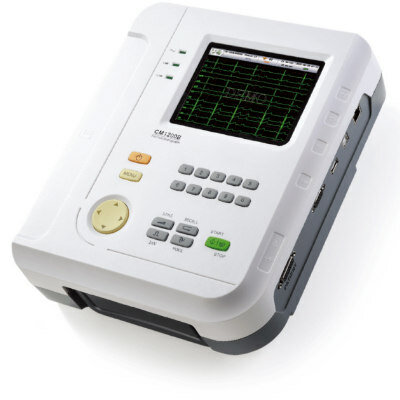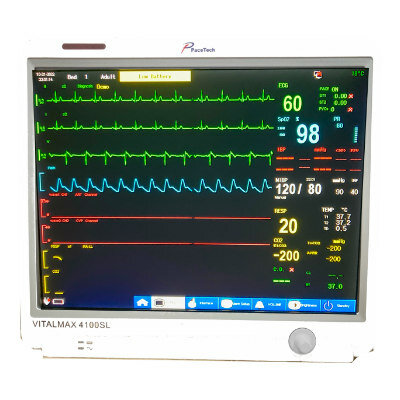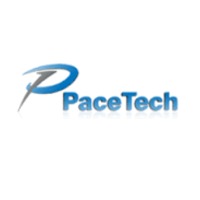US Announces Agreement on Health Data Interoperability
|
By HospiMedica International staff writers Posted on 13 Mar 2016 |
The US Department of Health and Human Services (HHS; Washington DC, USA) has fostered an agreement on health data interoperability between providers and healthcare information technology (IT) firms.
More than a dozen leading professional associations and stakeholder groups pledged to implement three core commitments that will improve the flow of health information to consumers and healthcare providers. The first commitment is to help consumers easily and securely access their electronic health record (EHR) information, direct it to any desired location, learn how their information can be shared and used, and be assured that this information will be effectively and safely used to benefit their health and that of their community.
The second commitment is no information blocking by helping providers share personal EHR information with other providers and their patients whenever permitted by law, and not block EHR information, defined as knowingly and unreasonably interfering with information sharing.
The third commitment is to implement federally recognized, national interoperability standards, policies, guidance, and practices for electronic health information, and adopt best practices including those related to privacy and security. Many of the market leaders are embracing the Office of the National Coordinator for Health IT (ONC) Interoperability Standards Advisory, a coordinated catalog of existing and emerging standards and implementation specifications that is updated annually in order to keep pace with developments in the health IT industry.
“Today I am announcing that companies providing 90% of electronic health records used by hospitals have made a public commitment to make data work better for consumers and providers,” said Sylvia Burwell, secretary of the HHS, at the annual meeting of the Healthcare Information and Management Systems Society (HIMSS). “Consumer access remains a challenge; it's great to have an electronic record, but if that record can't be easily accessed by doctors and patients because of funky technology, then we aren't consistently seeing the benefit.”
“We commend HHS for bringing so many stakeholders together, all of whom have an interest in using technology to result in a healthier and more efficient health care system,” said Steven Stack, MD, president of the American Medical Association (AMA; Chicago, IL, USA). “Patients and physicians are in this effort together because patients need easy access to their electronic health information, confident that it is secure and can be shared to benefit their health, and physicians need these electronic records to be interoperable to ensure that patients are receiving the best care possible.”
Many of the biggest health IT developers have already committed to using standardized application programming interfaces and Health Level 7 (HL7) fast health care interoperability resources (FHIR), so that user-friendly devices, such as smartphone and tablet apps, can quickly be made market-ready and compatible with one another. The use of a single shared standard for communicating among devices will make it easier for consumers to access their test results, track progress in their care, and communicate with their providers.
Related Links:
US Department of Health and Human Services
American Medical Association
More than a dozen leading professional associations and stakeholder groups pledged to implement three core commitments that will improve the flow of health information to consumers and healthcare providers. The first commitment is to help consumers easily and securely access their electronic health record (EHR) information, direct it to any desired location, learn how their information can be shared and used, and be assured that this information will be effectively and safely used to benefit their health and that of their community.
The second commitment is no information blocking by helping providers share personal EHR information with other providers and their patients whenever permitted by law, and not block EHR information, defined as knowingly and unreasonably interfering with information sharing.
The third commitment is to implement federally recognized, national interoperability standards, policies, guidance, and practices for electronic health information, and adopt best practices including those related to privacy and security. Many of the market leaders are embracing the Office of the National Coordinator for Health IT (ONC) Interoperability Standards Advisory, a coordinated catalog of existing and emerging standards and implementation specifications that is updated annually in order to keep pace with developments in the health IT industry.
“Today I am announcing that companies providing 90% of electronic health records used by hospitals have made a public commitment to make data work better for consumers and providers,” said Sylvia Burwell, secretary of the HHS, at the annual meeting of the Healthcare Information and Management Systems Society (HIMSS). “Consumer access remains a challenge; it's great to have an electronic record, but if that record can't be easily accessed by doctors and patients because of funky technology, then we aren't consistently seeing the benefit.”
“We commend HHS for bringing so many stakeholders together, all of whom have an interest in using technology to result in a healthier and more efficient health care system,” said Steven Stack, MD, president of the American Medical Association (AMA; Chicago, IL, USA). “Patients and physicians are in this effort together because patients need easy access to their electronic health information, confident that it is secure and can be shared to benefit their health, and physicians need these electronic records to be interoperable to ensure that patients are receiving the best care possible.”
Many of the biggest health IT developers have already committed to using standardized application programming interfaces and Health Level 7 (HL7) fast health care interoperability resources (FHIR), so that user-friendly devices, such as smartphone and tablet apps, can quickly be made market-ready and compatible with one another. The use of a single shared standard for communicating among devices will make it easier for consumers to access their test results, track progress in their care, and communicate with their providers.
Related Links:
US Department of Health and Human Services
American Medical Association
Latest Health IT News
- Machine Learning Model Improves Mortality Risk Prediction for Cardiac Surgery Patients
- Strategic Collaboration to Develop and Integrate Generative AI into Healthcare
- AI-Enabled Operating Rooms Solution Helps Hospitals Maximize Utilization and Unlock Capacity
- AI Predicts Pancreatic Cancer Three Years before Diagnosis from Patients’ Medical Records
- First Fully Autonomous Generative AI Personalized Medical Authorizations System Reduces Care Delay
- Electronic Health Records May Be Key to Improving Patient Care, Study Finds
- AI Trained for Specific Vocal Biomarkers Could Accurately Predict Coronary Artery Disease
- First-Ever AI Test for Early Diagnosis of Alzheimer’s to Be Expanded to Diagnosis of Parkinson’s Disease
- New Self-Learning AI-Based Algorithm Reads Electrocardiograms to Spot Unseen Signs of Heart Failure
- Autonomous Robot Performs COVID-19 Nasal Swab Tests

- Statistical Tool Predicts COVID-19 Peaks Worldwide
- Wireless-Controlled Soft Neural Implant Stimulates Brain Cells
- Tiny Polymer Stent Could Treat Pediatric Urethral Strictures
- Human Torso Simulator Helps Design Brace Innovations
- 3D Bioprinting Rebuilds the Human Heart
- Nanodrone Detects Toxic Gases in Hazardous Environments
Channels
Artificial Intelligence
view channel
AI-Powered Algorithm to Revolutionize Detection of Atrial Fibrillation
Atrial fibrillation (AFib), a condition characterized by an irregular and often rapid heart rate, is linked to increased risks of stroke and heart failure. This is because the irregular heartbeat in AFib... Read more
AI Diagnostic Tool Accurately Detects Valvular Disorders Often Missed by Doctors
Doctors generally use stethoscopes to listen for the characteristic lub-dub sounds made by heart valves opening and closing. They also listen for less prominent sounds that indicate problems with these valves.... Read moreCritical Care
view channel
Deep-Learning Model Predicts Arrhythmia 30 Minutes before Onset
Atrial fibrillation, the most common type of cardiac arrhythmia worldwide, affected approximately 59 million people in 2019. Characterized by an irregular and often rapid heart rate, atrial fibrillation... Read more
Breakthrough Technology Combines Detection and Treatment of Nerve-Related Disorders in Single Procedure
The peripheral nervous system (PNS) serves as the communication network that links the brain and spinal cord to every other part of the body. It consists of two parts: the somatic nervous system, which... Read moreSurgical Techniques
view channel
Hydrogel-Based Miniaturized Electric Generators to Power Biomedical Devices
The development of engineered devices that can harvest and convert the mechanical motion of the human body into electricity is essential for powering bioelectronic devices. This mechanoelectrical energy... Read moreWearable Technology Monitors and Analyzes Surgeons' Posture during Long Surgical Procedures
The physical strain associated with the static postures maintained by neurosurgeons during long operations can lead to fatigue and musculoskeletal problems. An objective assessment of surgical ergonomics... Read more.jpg)
Custom 3D-Printed Orthopedic Implants Transform Joint Replacement Surgery
The evolving field of 3D printing is revolutionizing orthopedics, especially for individuals requiring joint replacement surgeries where traditional implants fail to provide a solution. Although most people... Read more
Cutting-Edge Imaging Platform Detects Residual Breast Cancer Missed During Lumpectomy Surgery
Breast cancer is becoming increasingly common, with statistics indicating that 1 in 8 women will develop the disease in their lifetime. Lumpectomy remains the predominant surgical intervention for treating... Read morePatient Care
view channel
Surgical Capacity Optimization Solution Helps Hospitals Boost OR Utilization
An innovative solution has the capability to transform surgical capacity utilization by targeting the root cause of surgical block time inefficiencies. Fujitsu Limited’s (Tokyo, Japan) Surgical Capacity... Read more
Game-Changing Innovation in Surgical Instrument Sterilization Significantly Improves OR Throughput
A groundbreaking innovation enables hospitals to significantly improve instrument processing time and throughput in operating rooms (ORs) and sterile processing departments. Turbett Surgical, Inc.... Read more
Next Gen ICU Bed to Help Address Complex Critical Care Needs
As the critical care environment becomes increasingly demanding and complex due to evolving hospital needs, there is a pressing requirement for innovations that can facilitate patient recovery.... Read moreGroundbreaking AI-Powered UV-C Disinfection Technology Redefines Infection Control Landscape
Healthcare-associated infection (HCAI) is a widespread complication in healthcare management, posing a significant health risk due to its potential to increase patient morbidity and mortality, prolong... Read morePoint of Care
view channel
Critical Bleeding Management System to Help Hospitals Further Standardize Viscoelastic Testing
Surgical procedures are often accompanied by significant blood loss and the subsequent high likelihood of the need for allogeneic blood transfusions. These transfusions, while critical, are linked to various... Read more
Point of Care HIV Test Enables Early Infection Diagnosis for Infants
Early diagnosis and initiation of treatment are crucial for the survival of infants infected with HIV (human immunodeficiency virus). Without treatment, approximately 50% of infants who acquire HIV during... Read more
Whole Blood Rapid Test Aids Assessment of Concussion at Patient's Bedside
In the United States annually, approximately five million individuals seek emergency department care for traumatic brain injuries (TBIs), yet over half of those suspecting a concussion may never get it checked.... Read more
New Generation Glucose Hospital Meter System Ensures Accurate, Interference-Free and Safe Use
A new generation glucose hospital meter system now comes with several features that make hospital glucose testing easier and more secure while continuing to offer accuracy, freedom from interference, and... Read moreBusiness
view channel
Johnson & Johnson Acquires Cardiovascular Medical Device Company Shockwave Medical
Johnson & Johnson (New Brunswick, N.J., USA) and Shockwave Medical (Santa Clara, CA, USA) have entered into a definitive agreement under which Johnson & Johnson will acquire all of Shockwave’s... Read more
















